
Blue-winged Olives
Baetis
Tiny Baetis mayflies are perhaps the most commonly encountered and imitated by anglers on all American trout streams due to their great abundance, widespread distribution, and trout-friendly emergence habits.


Brachycentrus (Grannom) Caddisfly Pupa Pictures
The green blob contained in this case is a pupa in the early stages of transformation from larva to the final stage we generally picture and imitate. This specimen and several like it were fixed to a rock I picked up, and each one had the front of its case sealed off, protecting the helpless pupa from predation. It's neat to see the insect part-way through such a radical transformation.
It was very hard to extract this thing from its case, so there's a bit of extra goo near the head from where I accidentally punctured it.
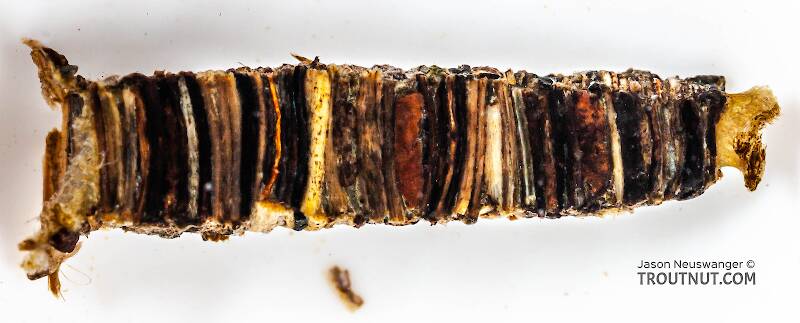
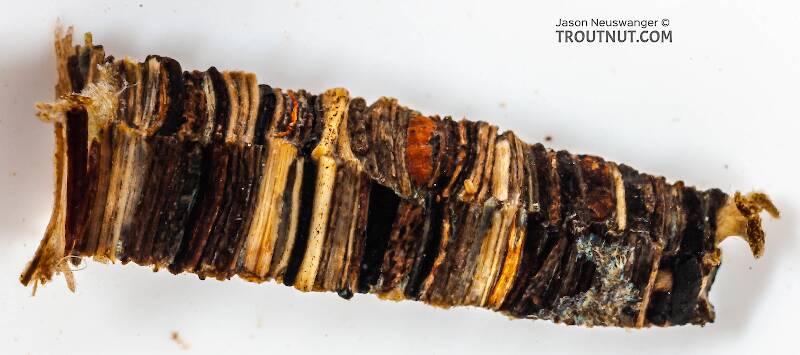
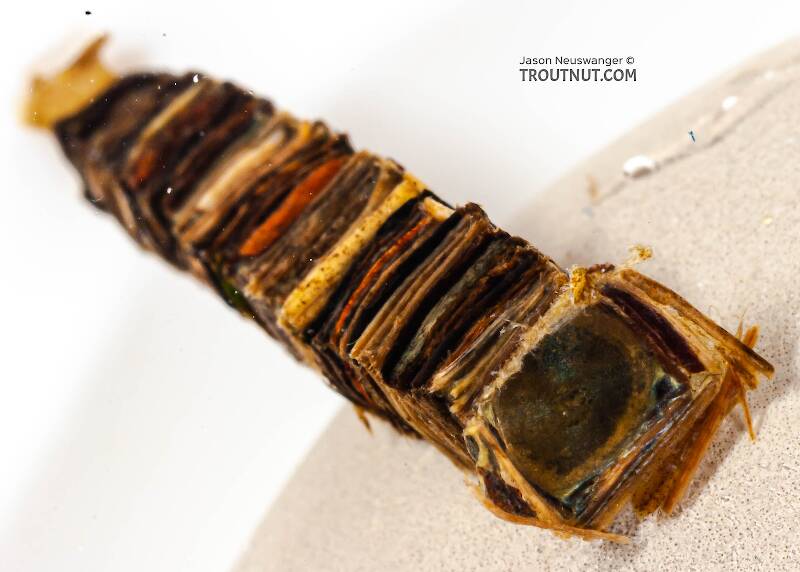
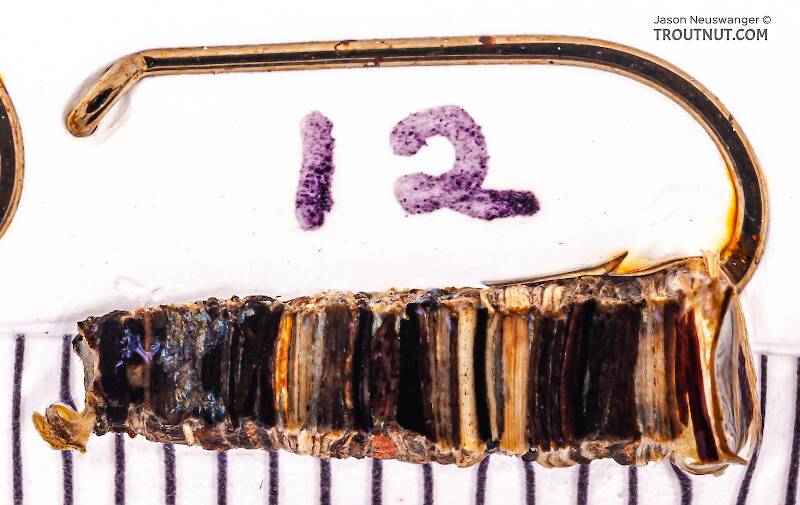
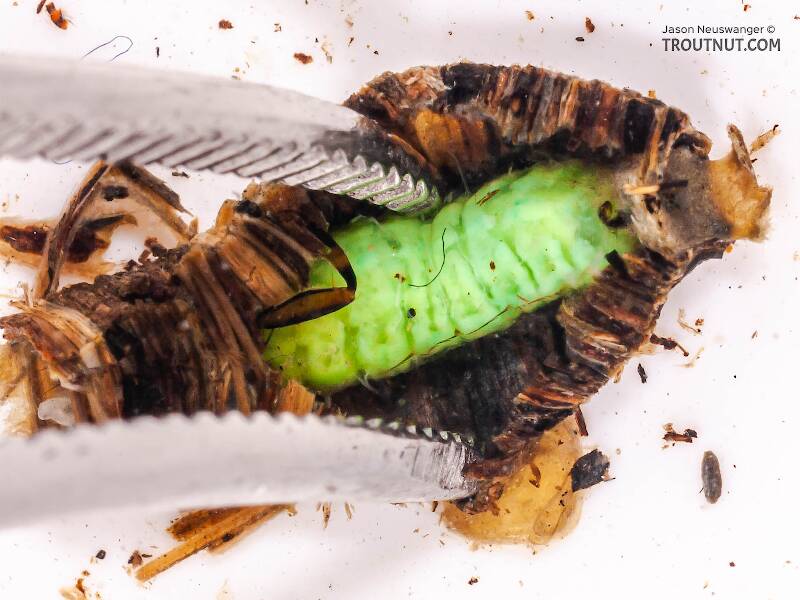
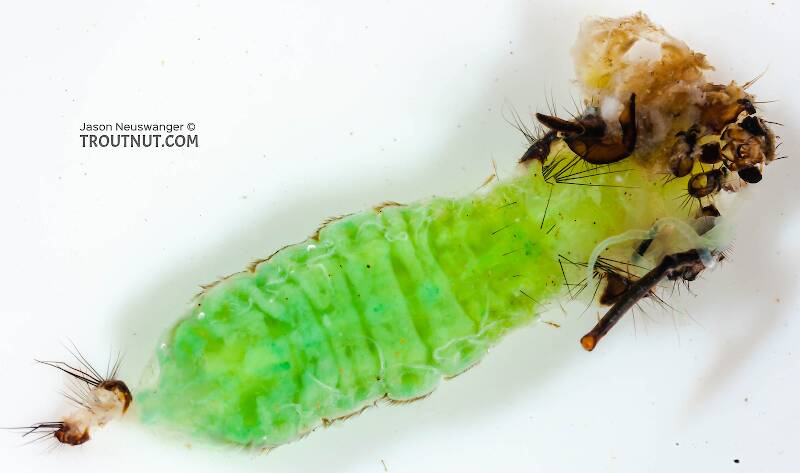
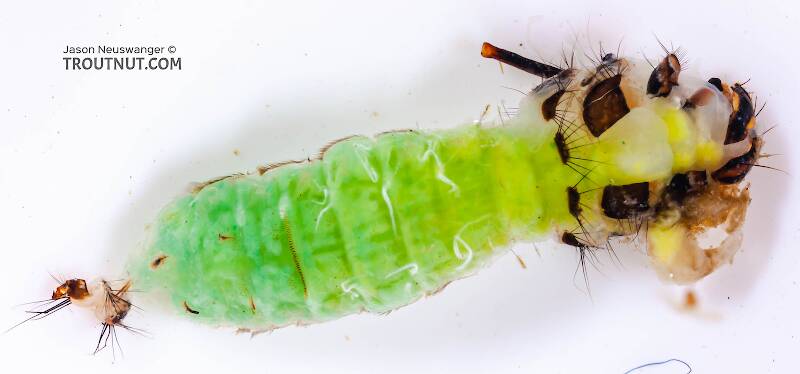
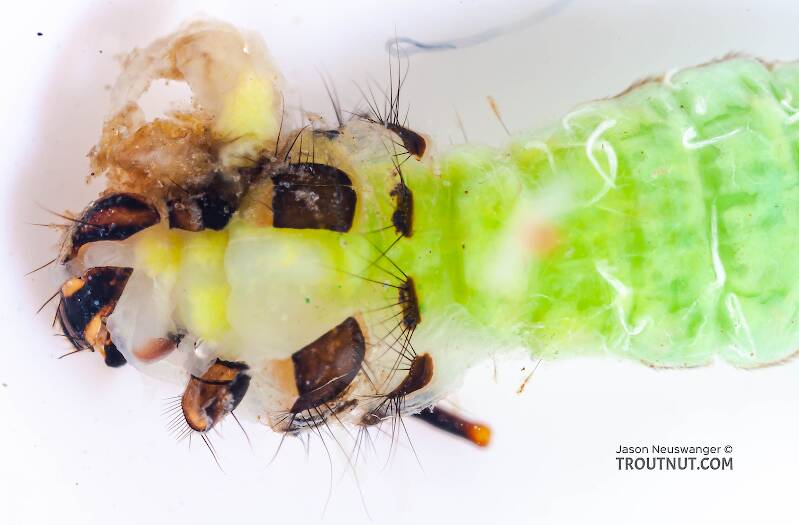
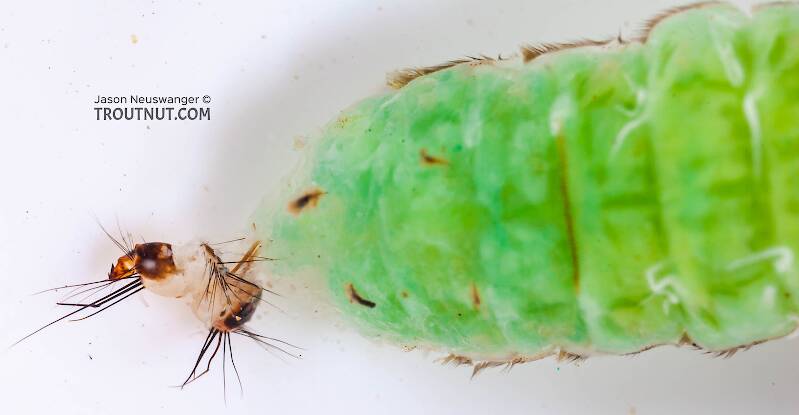
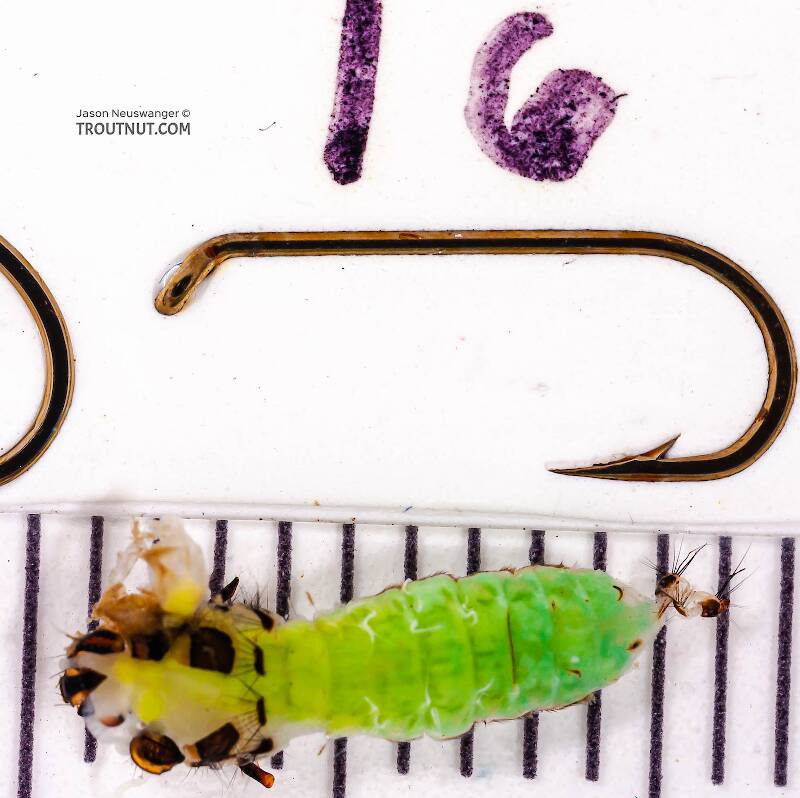
This caddisfly was collected from Cayuta Creek in New York on April 14th, 2007 and added to Troutnut.com by Troutnut on April 22nd, 2007.
Discussions of this Pupa
[br][br]
One of the things I've done forever is carry at least a couple of fairly large (3"-4") darning needles in my vest. You can conveniently carry them inside one of your foam fly boxes or poked into a foam fly patch. Besides making a good fid (tool for opening knots) it also persuades caddis to come out of their cases generally in one piece. If you have the larva in your hand and he hasn't sealed the opening for pupation, you can just insert the blunt end of the needle (the part with the eye in it) in through the back of the case and slowly push. Pretty quickly, he will start coming out the front of the case and you can persuade him to come out entirely without much problem.
[br][br]
You can extract intact examples of the larva or pupa pretty easily with this method. With a pupating caddis, you do need to cut off the sealed opening so the caddis can get out. You have to be pretty careful though, because it's easy to cut off his head if you aren't.
[br][br]
Of course, you won't get those great photos of half-cut open cases, but you don't have to worry about breaking off legs either. I started carrying those needles with me when I was teaching so I could undo "wind knots" more easily, but they are great at persuading caddis to leave their case.
[br][br]
Dan
do the grannom larvae in their cases hold onto the rocks with little sticky filaments which might be duplicated with a few fibers of CDC, or do they hold on with their legs sticking out which can be duplicated with hackle, or do they not hold on at all?
Start a Discussion of Pupa
Brachycentrus (Grannom) Caddisfly Pupa Pictures
Collection details
Date: April 14th, 2007
Added to site: April 22nd, 2007
Author: Troutnut

